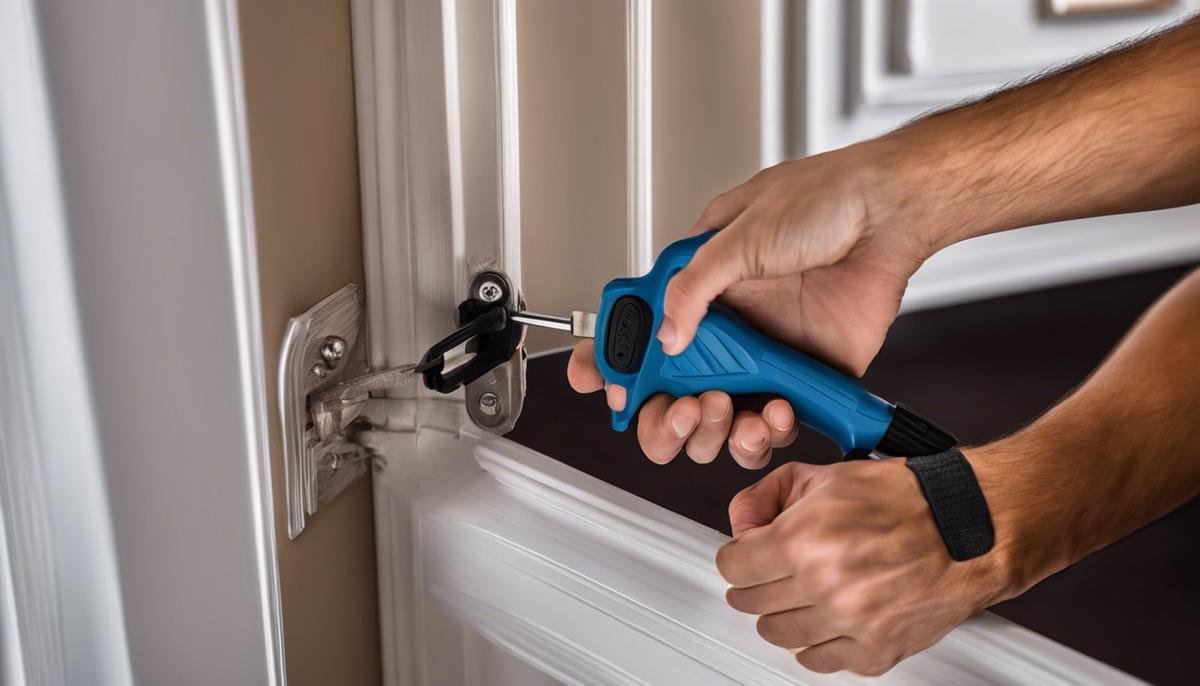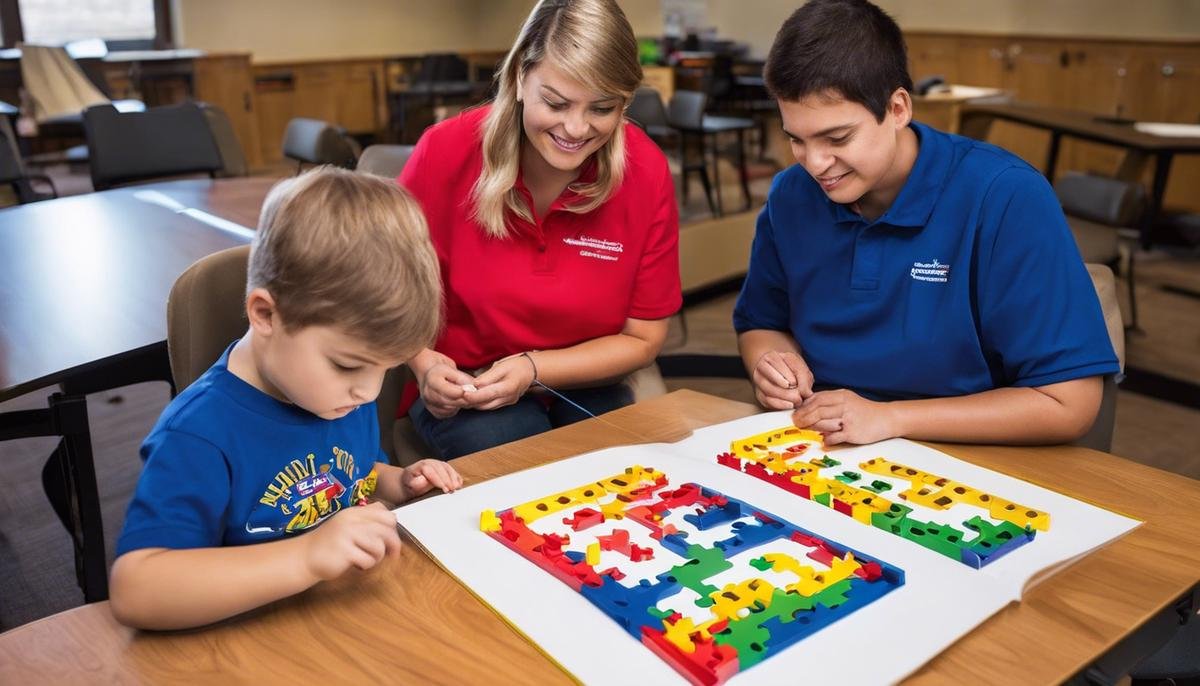
The issue of safety for individuals with autism resonates deeply with communities and families, as it encompasses the well-being of some of our most vulnerable members. This essay delves into critical strategies that not only strive to create safer environments but also empower those with autism through education and effective communication. By meticulously identifying and mitigating potential hazards within the home, we lay the foundation for a sanctuary of security. It is also crucial to impart vital safety skills, tailored to each individual’s understanding, ensuring that they can navigate their world with greater confidence and awareness. Moreover, enhancing communication through specialized systems marks a significant step towards guaranteeing that in times of need, the voices of those with autism are heard and help is within reach.
Creating a Safe Environment
Creating a Safe Haven: Home Safety for Individuals with Autism
When it comes to crafting a nurturing environment for a family member with autism, safety always takes a front-row seat. A home, after all, is more than just a dwelling place; it’s a sanctuary where every family member should feel secure and cherished. For those with autism, this involves a keen awareness of their unique needs and a touch of creativity. So let’s pull up our sleeves and transform our homes into a fortress of comfort and protection.
Securing the Perimeter: Fencing and Alarms Galore!
First things first – safeguarding the bounds of your home. A secure fence with locked gates is crucial for anyone prone to wandering, a behavior sometimes exhibited by individuals with autism. Coupled with this, installing alarms on doors and windows will serve as your electronic sentinels, promptly alerting you if your little explorer attempts to go on an unsupervised adventure.
The Sensory Retreat: Crafting Calm Corners
A sensory-friendly space is akin to a cozy nook where comfort is king. Soft lighting, calming colors, and comfortable seating can create a serene retreat. Consider adding items like weighted blankets or sensory toys that can provide comfort during overwhelming moments. These tranquility zones aren’t just about style; they’re essential for soothing the sensory storms that can sweep through a day.
Clutter-Free Living: An Organized Oasis
Say goodbye to clutter and hello to structured organization. Clear pathways and a minimalist approach can prevent trips and falls, especially for those who may have difficulty with spatial perception. Labeling storage areas with pictures or clear words can help our family members navigate and locate items with ease, fostering independence and reducing anxiety.
Emergency Preparedness: Planning and Practice
It’s all about being one step ahead. Tailored emergency plans are non-negotiable. Ensure that family members know these plans well and practice them regularly. Information cards with relevant details about your family member’s needs and emergency contacts can be a life-saving touchstone for first responders.
Household Hazards: Locks, Guards, and Shields
Let’s talk about some pragmatic to-dos. Safety locks on cabinets and appliances deter curious hands from hazardous items. For items that pose a choking risk or other dangers, keep them off limits to ensure in-home explorations remain safe. And let’s not forget about corner guards on furniture – they’re like little bumpers in this bustling car park of life.
Tech to the Rescue: Gadgets and Gizmos Aplenty
In the spirit of modern homemaking, let’s embrace technology that can offer an extra layer of protection. Monitors can give a visual and audio peek into different areas of the home, and GPS devices can keep tabs on someone’s whereabouts. Think of these gadgets as your digital deputies in the quest for safety.
Building a home safety net for someone with autism doesn’t happen overnight, but with thoughtful adjustments and a strong dash of love, we can craft a space where happiness and safety dance in step. And remember, your efforts aren’t just creating a safe place, they’re weaving the threads of comfort and confidence into the fabric of everyday life.

Teaching Safety Skills
Empowering Safety: Essential Skills for Individuals with Autism
When it comes to nurturing a safe environment for loved ones with autism, there are several crucial safety skills that are integral to their well-being. While physical modifications to the living space are foundational, empowering individuals with autism to actively participate in their safety can have life-saving implications. Here’s a look at indispensable safety skills that can provide peace of mind and foster independence.
Firstly, understanding and communication regarding personal boundaries are vital. Teaching clear and consistent signals or words that indicate discomfort or a need for space can prevent overwhelming situations for individuals with autism. Roleplaying different scenarios helps reinforce these signals, providing a means for self-advocacy and ensuring that these cues are respected and acted upon by everyone in the individual’s life.
Water safety is another skill that cannot be stressed enough. Drowning is a leading cause of accidental death among children with autism due to a common attraction to water. Enrolling in specialized swim lessons tailored for individuals with autism not only teaches them how to navigate water safely but also imparts the understanding of where and when it’s appropriate to engage with water.
Personal information retention and recall are life skills that bolster safety. Ensuring individuals with autism know their full name, address, and the phone number of a trusted adult lays a foundation for help if they become lost or need assistance. Rehearsing this information regularly in a calm, non-stressful environment promotes retention and confidence.
Safety around strangers is a delicate yet essential topic to address. Distinguishing between ‘safe’ and ‘unfamiliar’ people, and knowing when and how to seek help, is paramount. Tools such as color-coded lanyards and identification cards can aid individuals with autism in seeking help when in need. Practicing scenarios with ‘pretend’ strangers allows for the repetition needed to ingrain these safety responses.
Lastly, instilling a routine for checking in is a solid safety habit. Whether it’s a scheduled phone call, a text message, or an agreed-upon time to return home, having a check-in system in place promotes responsibility and eases the anxiety of caregivers. In the case of nonverbal individuals with autism, alternative check-in methods can be developed, like a visual or symbolic check-in routine.
When it comes to safeguarding our precious ones with autism, it’s the blend of a secure environment and practical, taught behaviors that creates a comprehensive safety net. By instilling these skills with patience, repetition, and love, each step is a stride towards a safer and more independent life for individuals with autism. Building these safety competencies is not just about preventing harm—it’s about enriching their lives with confidence and self-reliance in a world that can sometimes be unpredictable.

Communication Strategies
Ensuring the safety of children with autism requires adaptive communication strategies that cater to their unique needs and understanding. Here are practical ways to enhance communication to further promote safety:
Visual Schedules and Cues:
Children with autism often thrive with predictable routines and visual supports. Implement visual schedules that depict daily routines, including safety checks such as locking doors and wearing seatbelts. Visual cues can serve as constant reminders and reinforce safety habits.
Social Stories for Safety Scenarios:
Use social stories to illustrate various safety scenarios. These narratives should cover what to expect, appropriate behavior, and the importance of adhering to safety rules. Tailoring social stories to real-life experiences can aid in understanding and compliance.
Safety Signs around the Home:
Place simple, clear safety signs around the home to remind of danger zones or safe areas. Use universally recognized symbols when possible as they are easier to generalize in public settings.
Role-Playing Drills:
Engage in regular role-playing exercises that simulate different safety situations such as fire drills, getting lost, or how to interact with first responders. Role-playing provides a safe environment for practice, leading to better preparedness.
Communication Devices and Apps:
Utilize communication devices or apps specifically designed for non-verbal or minimally verbal children. These tools can be vital in expressing needs or alerting others in a safety situation.
Safety Skills Workshops:
Enroll in workshops or classes that focus on safety skills for children with autism. These programs often offer tailored methods to teach concepts like recognizing emergency vehicles, understanding “stop” signs, and responding to alarms.
Visual Aid for Personal Information:
Provide children with a wearable ID or a card that has key personal information and emergency contacts. Teach them to show this to trusted adults or first responders when necessary.
Non-Verbal Communication Skills:
Strengthen non-verbal communication like pointing, leading someone to an area, or using gestures. These skills can be essential when verbal communication is not an option.
Encouraging Independence:
Create opportunities for children to practice making small, safe decisions on their own. This will foster independence and boost their confidence to communicate their needs and boundaries.
Above all, be patient and consistent. Improving communication for safety in children with autism is an ongoing process, and every step taken is progress toward ensuring their well-being.

Fostering a safe and nurturing environment for individuals with autism is an ongoing journey that demands attention, patience, and creativity. The endeavors to secure homes, teach critical safety skills, and expand communication capabilities are not just precautionary measures; they are lifelines that connect individuals with autism to a society that embraces them wholly. By implementing these strategies, we help forge a world that acknowledges individual needs and works tirelessly to ensure that everyone has the opportunity to live safely and with dignity.




